DESTINATIONS
I have chosen a lush and mountainous region in Southeast Asia to arbitrate my case study. My proposal is to initially travel to Chiang Mai in Northern Thailand and stay a week in the city, as I slowly adapt to Thai culture within this region. Thailand is known for a more “recent” style of music called Luk Thung, which was developed in the 60’s as a response to American film soundtracks as well as some country and yodeling techniques. The Thai adapted this style of music, making it their own- though it was also influenced by techniques from Malaysia, Indonesia, Japan, and Latin America. These are “songs [that] typically reflect the hardship of everyday life among the rural poor. Tempos tend to be slow, and singers use an expressive singing style with a lot of vibrato. Comparisons are sometimes made with country music of the United States“. (Wikipedia- Luk Thung) While I would love to have the opportunity to record some of this richly cultural music while I’m in Thailand, it is not the direct goal of my case study. This is mainly because Luk Thung is now known for its utilization of modern electronic instruments, (such as electric guitars) and the music itself is more like contemporary power pop ballads but “[t]hey still retain enough of their traditional flavor to distinguish themselves from Westernized modern Thai pop (Sattar 1). I am interested in a style of music that was developed during an earlier time in both Thailand and Laos.
REGIONS & STYLE OF MUSIC
The Northern regions of Thailand are heavily associated with music called Mor Lam, which translates to one who is an “expert instrumentalist or singer.” Mor Lam’s roots are much older than Luk Thung, as they originated in the distinctively Laotian region (in northeastern Thailand) known as Isaan. The borders between Thailand and Laos are entirely interwoven, so many cultural traditions and styles are shared, and have blended over a period of many many years. (Truthfully, what are boarders really, anyway?)
The red region represents Isaan:
LANGUAGES/RELIGION
It’s important to note that the “inhabitants of Northern Thailand speak Kham Muang (also known as Northern Thai or Lanna) among themselves, though Central Thai is used in education and is understood by everyone. English is used in hotels and travel-related businesses and many educated people speak English. The Kham Muang alphabet is now studied only by scholars, and Northern Thai is commonly written with the standard Thai alphabet” (Wikipedia- Chiang Mai).
The most common religion in Chiang Mai, Thailand is Buddhism. There are over 300 “Wat,” meaning Buddhist temples in the region. There are a number of different festivals and traditions, specifically charted by the moon/Lunar calendar. “Loi Krathong (known locally as Yi Peng): Held on the full moon of the 12th month in the traditional Thai lunar calendar, being the full moon of the 2nd month of the old Lanna calendar. In the western calendar this usually falls in November. Every year thousands of people assemble floating banana-leaf containers (krathong) decorated with flowers and candles onto the waterways of the city to worship the Goddess of Water. Lanna-style sky lanterns (khom fai or kom loi), which are hot-air balloons made of paper, are launched into the air. The sky lanterns are believed to help rid the locals of troubles and are also taken to decorate houses and streets” (Wikipedia- Chiang Mai).
Loi Krathong
MORE MOR LAM
As I plan on fully experiencing this region, I will surely be asking the locals about traditional “mor lum, maw lam, maw lum, moh lam and mhor lim, as all these names refer to the same kind of music played and sung by experts.
Perhaps it will occur in Isaan, or really anywhere between Thai and Lao borders, I will record Mor Lam (such as this next video which includes an ensemble of playful vocals, clapping, traditional Laotian khene, drums, small chimes, hand-gestured dancing, and tons of smiles 🙂
Mor Lam is based upon Glawn, or Gaun, which is the content focus of traditional Lao music. Glawn is a verse form used in both the poetry and songs of the Lao People. It is the most common text in traditional Mor Lam, and is made up of four-line stanzas, each with seven basic syllables. When Glawn/Gaun is sung or spoken in a form of heightened speech, it often includes extra, unstressed syllables, making it rather regimented. “There is a set pattern for the tone marks to be used at various points in the stanza, plus rhyme schemes to hold the unit together. Performances of glawn are typically memorised rather than improvised” (Wikipedia- Glawn). Often, the Glawn performance is accompanied by the Laotian “khene (khaen in Thailand) [which] is the iconic instrument of the Lao people, including those living in Isaan, the region of Northeast Thailand that formerly belonged to Laos. The khene is basically a bamboo harmonica, two rows of pipes connected in a raft-like form. The player breathes in and out, creating an insistent rhythmic groove. The singing, or lam, is often done by a male and female in a kind of teasing, yet playful repartee” (Haji Maji 1).
I feel that I could capture some fairly unique recordings of Mor Lam, mostly because a lot of what I heard was lo-fidelity/quality. You aren’t able to hear the full set of instrumental harmonics, and most of the timbral qualities are overshadowed by heavy noise-floors that occurred during recording.
Master Daeng Toy is considered to be one of the greatest Khene players:
INSTRUMENTATION
As I plan on making my way through these regions for at least a month, I will be focusing heavily the various forms of instrumentation. Thailand is swarming with a multitude of different kinds of instruments, all of which are plucked, bowed, stricken, and blown. I’m less interested in the heavy gong traditions introduced to Thailand from Indonesia (For instance: the Gamelan Ensembles which have already had an extensive amount of research.) I am more curious about the free-reed instruments such as the Khene, or the aerophonic Pi Chum/ Pi Nai which is a free reed pipe used in the the Thai Lanna (northern) region. There are various types of Pi’s, “[which is the] generic term for any of a variety of quadruple reed oboes used in the traditional music of Thailand. It is very similar in construction and playing technique to the Cambodian sralai” (Wikipedia- Pi (Instrument). There is a Pi Nok, (the smallest, and most ancient instrumental Pi in Thailand), the Pi Nai which is commonly seen in Thai literature, such as the Phra Aphai Mani. There is also a Pi Cha Nai, which has two parts made of both wood and ivory. It is believed that this instrument obtained its musical influence from India, as it closely resembles the Indian Shehnai. The Pi Chawa is longer than the Pi Cha Nai in length, and is generally played alongside the Glong Khaek (drums that are always played in a pair, and played by 2 players.) The Pi Mon is the “greater” version of the Pi Chawa, and has 2 parts and made from wood and metal. This instrument is played at the classical Thai Piphat Ensemble, consisting of numerous wood and percussion instruments. The Piphat Ensemble is considered to be a musical interpretation of the most sacred “high-class” compositions of Thai classical repertoire.

The Bamboo Drum, or Klong Mai Phai is an instrument that has nearly vanished- therefore, I find it imperative to find, capture, and record the sounds and music that it can make. It was very difficult for me to find any samples of this idiophonic drum online (except on this website: (http://www.chiangmaitouristguide.com/02-2012/feature2.html). According to ChaingMaiTouristGuide.com, “[s]ome decades ago, when kids had to take their buffaloes out to graze, their parents would give them the instrument they’d devised to keep their children entertained. It is easy to make and play, and so good for beginners. Unfortunately this bamboo drum is going to become extinct since the only people left playing today are our grandpas and grandmas.”
The other traditional instruments in Northern Thailand/Laos are these different types of chordophones (as pictured below.) There are also a number of dissimilar shaped/sized hand-drums.
Long ago, Thai people understood how to make their own innovative musical instruments. Once they came into contact with various Indian cultures (prominent throughout Southeast Asia at the time), the Thai became rather skilled with duplicating Indian instrumental patterns. As a result, several new kinds of instruments were created after exposure with the Indian musical culture. This included many different versions of aerophonic flutes, chordophonic stringed instruments and idiophonic gongs.
As pictured above, here is a popular instrument called the Pin-Pia, which is considered to be the National instrument of Thailand. (This instrument has undergone very little changes from the past to present) The “Pin-Pia pieces [you can hear below] are performed by Cun Smithitham in July 2005: this instrument has three strings and the vibrato is made by cupping a half coconut shell on your naked breast” (David Soldier 1). This particular instrument is 3000 years old.
Ethnomusicologist/Field Recordist Dave Soldier has some gorgeous field recordings of the Pin Pia on his website: Check out these recordings here!
All together, there are about 50 types of Thai musical instruments. The earliest Thai ensembles included woodwind and percussion instruments, originally for the purpose of theatre accompaniment. The Thai scale includes seven equal notes, instead of a mixture of tones and semitones. Instruments improvise around a central melody. Not only is traditional Thai music unique for its sound, but also for the absence of written music. The only way to learn it is from the masters, making it a rare art form (one could be so lucky to learn…)
ANOTHER DESTINATION…
MUSIC IN THE GOLDEN TRIANGLE
During my research, I found that the Golden Triangle has a rich musical culture of its own! And who other than my own most revered record label to record such music?! Sublime Frequencies; a local Seattle Record Label that seeks to travel the world and record music from different remote regions. [I have my mind set on eventually working with these like-minded folks.]
Here is a piece of music from the Golden Triangle recorded by Sublime Frequencies in 2005. “Guitars of the Golden Triangle” featuring twangy-electric guitar, child-like vocals, and percussion in a 2/4 shuffle.
Unfortunately many of the music pieces are not able to be played without purchasing the Vinyl/LP’s, though I have also found that Sublime Frequencies (Specifically Laurent Jeanneau: Kink Gong Records) has recorded Ethnic Minority music from Southern Laos.
“This is a collection of landmark recordings by Laurent Jeanneau documenting music created by the Harak and various Brao ethnic groups in Southern Laos. Here you can hear the true historic roots of Molam music (now a venerable popular music style in Laos and Thailand) played on the Khaen along with vocal styles from this region. Also featured here are Gong ensembles, various stringed instruments, cymbals, drums, and sung poetry all captured live on location with the ambient sounds of the surrounding villages. These recordings were made in Xekong, Champasak and Attapeu provinces and because much of this music is unknown, this is probably the first time recordings have ever been released of indigenous music from these remote areas of Southern Laos. This is the second release in a series of spectacular field recordings from some of the more remote ethnic minority communities in Southeast Asia. Features insightful liner notes by Laurent Jeanneau and extended track listing with added information about each track recorded” (SF036 – Ethnic Minority Music of Southern Laos- Sublime Frequencies).
I also found another resource for music in the Golden Triangle; Francois Jouffa (This biography is all in French…) Jouffa released a compilation in 1980 under the “Musical Heritage Society” His LP can be purchased here: http://www.discogs.com/François-Jouffa-Music-Of-The-Chinese-Tribes-In-The-Golden-Triangle/release/3624405 and it features music from the various Chinese Tribes who immigrated to the Golden Triangle region many years ago.
The Akha tribe inhabits the small villages among the mountains of Burma (Myanmar), China, Laos and the northern Thailand.
AKHA COSMOLOGY
The majority of the Akha people are animists, meaning that they believe that animals, plants, and inanimate objects/phenomena posses a spiritual essence. It is in this way that the Akha people (as well as many of the other hilltribes in Southeast Asia) live out their their lives. With this sort of respect for the environment, this traditional Chinese tribe manages to live in harmony with the nature around them.
“The Shaman or the Spiritual Leader is the most important person in every Akha village. Furthermore Akha see themselves as a link in the great continuum of Akha history and they are in a very close relationship with their ancestors. All Akha traditions and ceremonies are called “The Akha Way” [which] determines their whole life – their manners, the way they treat one another, how they view sickness, how their houses look like and many more” (Blazejewska 1).![]() “The role of music in pre-literate societies cannot be underestimated, for the oral arts have functioned throughout the millennia as the primary channel for sustaining history, myths, customs, laws, knowledge, and beliefs, thereby linking the first ancestor with all who follow. This is so beautifully illustrated by the Akha saying: “If a village has no music, how can it be called a village?”
“The role of music in pre-literate societies cannot be underestimated, for the oral arts have functioned throughout the millennia as the primary channel for sustaining history, myths, customs, laws, knowledge, and beliefs, thereby linking the first ancestor with all who follow. This is so beautifully illustrated by the Akha saying: “If a village has no music, how can it be called a village?”
AKHA FESTIVALS/FUNERALS
Through research, I found that there is an “Indigenous People’s Festival” in Chiang Mai that occurs in early August. This wasn’t necessarily the timing that I was planning on, but it’s something to think about when purchasing tickets. Sometimes the festivals are authentic, but there are also a good many that are designed to entertain tourists. I would rather not be perceived this way. This next video is not the greatest quality, as we can hear the entire environment louder than the actual singing. However, I felt it would be interesting to show that the various Akha tribes share the same funeral customs of singing together.
PREVIOUS RESEARCH & INSTRUMENTATION
The Songs of Memory museum exhibition is a multi-media display that presents comprehensive collections of musical instruments, tribal textiles, jewelry, films, and photographs of the six major tribal groups living in the Golden Triangle—the Hmong, Mien, Lahu, Akha, Lisu, and Karen. (I will briefly speak about the Karen tribe later). Music is entirely important, and with modernization occurring at a rapid pace, it’s essential to capture, honor, and respect the sounds of their ancestors.
Click this link to see the tribal instruments of the Akha peoples.
RECORDING EQUIPMENT
As far as equipment goes, I wanted to give a brief overview of how to best capture sound while field recording. Achieving a bit of popularity in the 1970’s, field recording has become its own viable and expressive art form. With the introduction of high-quality portable recording equipment, there has never been an easier time to begin recording and sampling natural sounds in any given environment. Today, we have the luxury of not having to record to tape. This has its ups and downs, but with regards to digital recordings, portability has never been easier. The first important piece of equipment needed is the field recorder itself. Depending on one’s budget, there are a wide range of portable and high-quality recorders. If you want to keep the price range under $3-400, you may consider purchasing a Zoom H4N or H6 with interchangeable microphone capsules. Marrantz, Edirol, and M-Audio also make inexpensive options that are simple to use and can capture high-fidelity stereo field recordings (without much of a hassle.) If your budget is much greater and you are recording at a more professional level, prices can easily range to thousands of dollars. A good example is the Sound Device. Even the 702, high-resolution 2-channel recorder is nearly $2000. It is quite evident that with this particular manufacturer, (and most others) the more channels you want, the more expensive it will cost- (2-channels= $2000, 4 channels= $4000, etc).
For my Southeast Asia trip, I plan on being realistic as to what I own, and have access to as a young field recordist- I own the Zoom H6 with interchangeable microphone capsules. (It comes with an M/S style transducer that pics up on 2-sides of its ball-like head, an X/Y stereo capsule that can spread to both 90 and 120 degrees for more or less of a span of stereo imagery, and I also purchased the interchangeable shotgun mic mount. Each of these mics have respective wind-guards to cut down on environmental noises…like wind, which has the ability to destroy an otherwise awesome recording.) I would like to purchase the Shure VP88 as a single point, stereo condenser as well. I will also bring a stereo pair of AKG 214’s, or something comparable. This way I can have my choice of what will sound the best in any given scenario. I will bring this kit with a ton of back up batteries. I learned the hard-way that water damages equipment, sometimes so much so that you can no longer can use your expensive gear. I would like to find out if there are any water-proofing options for my equipment, or if we have to solely rely on umbrellas?
TRANSLATORS
As far as translation services go, I found that Chiang Mai has a number of resources, as well as people to translate Thai into English. A company called “CNX Translation” provides not only Thai–>English translation, but also Simplified and Traditional Chinese into English. This would be rather essential considering I’m not only searching for musicians of one cultural background–I need someone who can translate Thai, Chinese (of different dialects), as well as Laotian. The CNX business has great rates although, “The price can vary depending on factors such as nature of text, deadline, availability and long-term relationship.” This company generally deals with documents that need to be translated, rather than traveling/tour guide translators. However, upon contact with this company I would be able to discover if they would be able to help me out quite quickly. If they cannot- they may know who can.
TOURS: THE KAREN LONG-NECK TRIBE
I also discovered Chiang Mai Tour Guides at a website called Chiangmaitourguides.com. This company prides itself on the fact that they do tours/activities, and translating. This may be a better company for what I’m specifically looking for. Especially if I need to go towards Southern Laos, as well as the Golden Triangle. This company has a tour that goes to the Golden Triangle, as well as a tribe called “The Karen Long-Neck Tribe.” This is most certainly something that I could get behind. Maybe this indigenous group of people would be interested in recording the songs of their ancestors. These “[w]omen put brass rings on their necks when they are 5 or 6 years old and increase the number every year until their necks become longer, as a symbol of beauty. They are one of the most interesting hill tribes in the world” (ChiangMaiTourGuides.com).
Just like the prior translation company, these are great places to start looking. If one company cannot do what I need, they may be able to refer me in a better direction.
NO CREW
As far as the trip itself goes, I am planning as though this is a real trip my husband I and will be taking. There will be no crew besides he and I, though he is also a musician and knows very well how to handle audio equipment. I would love to bring a video camera, or have him take any sort of directed footage. However, it is true that I specialize in field recordings, which forces the listener to visualize what they are hearing. I enjoy this. Video camera or not, my mission is for the audio recordings.
AIRFARE (KOREAN AIR)
After doing research, I found that the best time to travel in Southeast Asia is November through February. Assuming we leave this coming November 2014, are away for 1 month, and return in December 2014, tickets are about $1,100 per head (Korean Air). This should technically be the most expensive part of the get-away. Going through Trip Advisor, I chose to use Expedia.com. This graph shows that we would depart from Seattle at 12:40pm- and land in Seoul, Korea (5,196 miles away)- and the overall trip would be 12 hours. Then, we would be taking Korean Air from Seoul to Chiang Mai, which is a 5 hour and 55 minute flight. (2,109 miles).
This is a long trip! [BUT SO WORTH IT!]
| Sun, Nov 02 – Departure | 1 stopTotal travel time : 19h 0m | ||
|---|---|---|---|
| Web Fare | |||
 |
|
|
12h 0m 5,196 mi |
Layover: 1h 5m |
|||
| Web Fare | |||
 |
|
|
5h 55m 2,109 mi |
CONTACTS/CONNECTIONS IN CHIANG MAI
I have done my best to connect with people through Instragram and Facebook who live in Chiang Mai, and so far have met a lovely lady from Australia currently living in Chiang Mai. Having been there for some time, she offered to meet up with me and show me the ropes. I feel so blessed that it’s not that hard these days to link up with people over the internet (without feeling at all endangered.) I will be counting on people who I meet who can lead me in the right direction in order to accomplish my goals.
LAVISH HOTEL STAY (1/4 of the trip) & VILLAGE ROOMS (3/4 of the trip)
The 4 Seasons in Chiang Mai is absolutely gorgeous, and yes. It’s a 5 star hotel. The structure is pushed up against a green-belt jungle and it would be a FABULOUS place to get started before the real journey throughout the villages begins. (This being said, it is $392.00 a night to stay at the 4 Seasons). I would consider staying here for a week, and I’m sure my husband would agree that it would be nice to be pampered before we head into some of the indigenous villages. Sleeping in a room in the middle of a small path (really in the middle of no-where) will most likely be occurring throughout the rest of the trip. We may be taking it day by day….referral by referral…
There’s also another Chiang Mai hotel called The Rachamankha. This hotel looks equally as lavish, and is a much more affordable $209.00 a night. It may be a more likely possibility.
BUDGET
As far as budget goes, we’re looking at round-trip pricing around $2,400. Then, if we were to stay at The Rachamankha for a week, that’s about $1463.00. I’ve looked up a ton of restaurants and the food is all SCARILY inexpensive. Each meal is probably under $10 a day… so adding up breakfast, lunch, and dinner for the week would be about $210 per person. ($420). So far, I know for the first lavish Thai experience we’ll need at least $4283. This doesn’t include translator services, touring, or activities. I think a safe bet would be to set aside $8-10,000 for the entire vacation.
COMPENSATION
I don’t want to discount the musicians who will be involved in my concept of a world wide tapestry of musical culture and folklore. I will be paying them on the spot, almost like a “work for hire.” I think this is the best technique because copyright is a very difficult thing to get around. Especially internationally. If I wanted to collaborate with these musicians… or use their recordings to aid in the creation of my own music, I would just want to make that clear to them. This is where my translator comes into handy. I would need to draft up some extremely “easy-to-comprehend” contracts to allow for this. If I make “x” amount of money on a project that I enhance with my own musical influence, “x” amount will return to those who helped me create it.
FINAL PRESENTATION
I plan on having extraordinary file management throughout this entire audio-collecting journey. With a couple external hard-drives and a lap top, properly organizing what I capture should be straight-forward. My goal is to create a collection of vivid field recordings (assuming there is little to no video-footage). I will be recording in 96kHz so that the audio quality will be rather high-fidelity. I want people to visualize what they are hearing, and create their own mental imagery of Southeast Asia. The field recordings may be of some interest to certain cultural museums, or maybe even the Library of Congress!
Though EarthPop Studios is officially an LLC, and label of its own, it’d be nice to have the “Sublime Frequencies stamp of approval” and have the recordings formatted for both CD and digital delivery.
http://www.tribalmusicasia.com
http://en.wikipedia.org/wiki/Luk_thung
http://en.wikipedia.org/wiki/Mor_lam
http://en.wikipedia.org/wiki/Glawn
http://hajimaji.com/category/laos/
http://en.wikipedia.org/wiki/Animism
http://en.wikipedia.org/wiki/Golden_Triangle_(Southeast_Asia)
http://lobefood.com/product/sf036-ethnic-minority-music-of-southern-laos/
http://www.asianclassicalmp3.org/lanna.htm
http://traveltips.usatoday.com/time-southeast-asia-18683.html
http://www.chiangmaitouristguide.com/02-2012/feature2.html
http://en.wikipedia.org/wiki/Dave_Soldier
http://davesoldier.com/field.html
http://en.wikipedia.org/wiki/Pi_(instrument)#Pi_nok
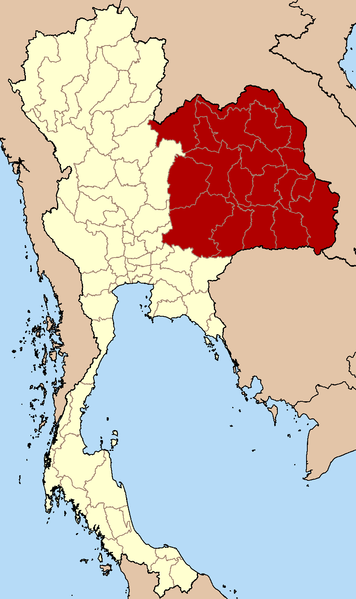





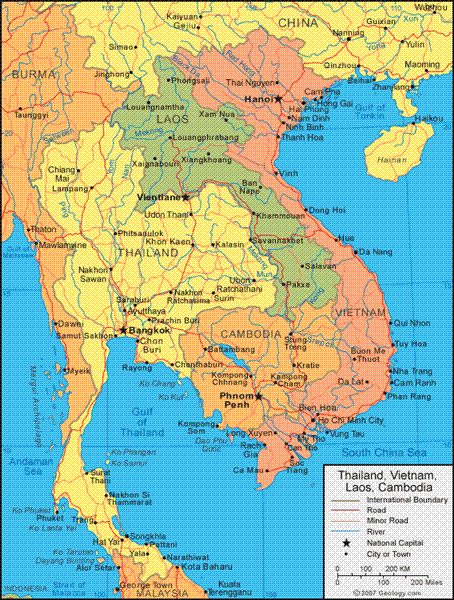
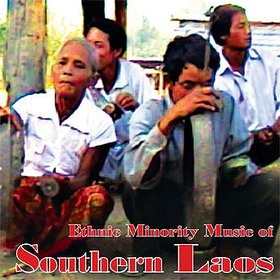
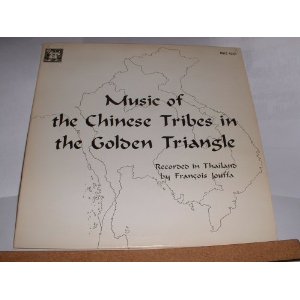

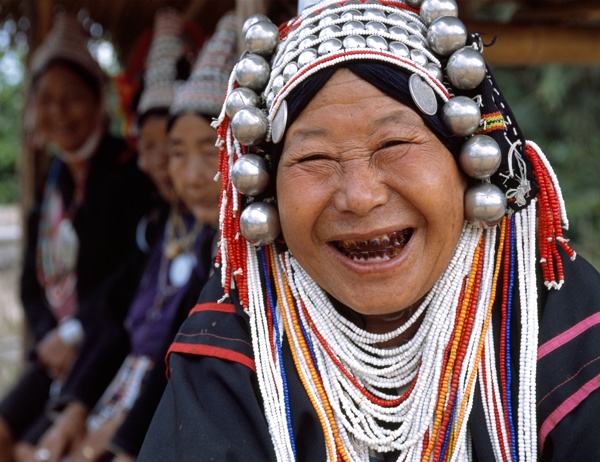






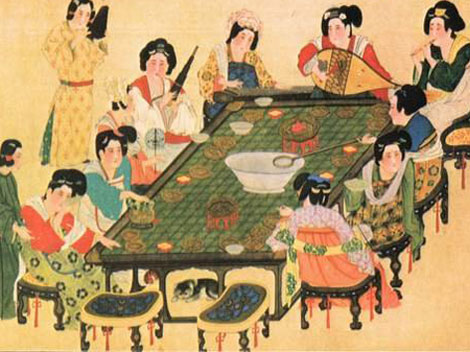
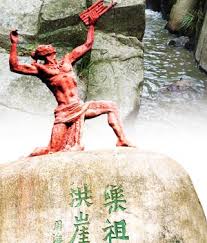







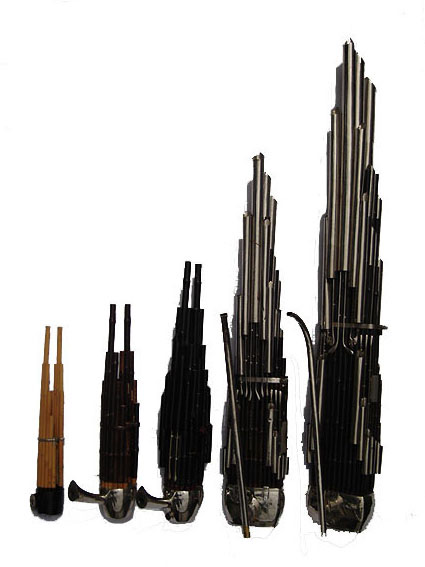
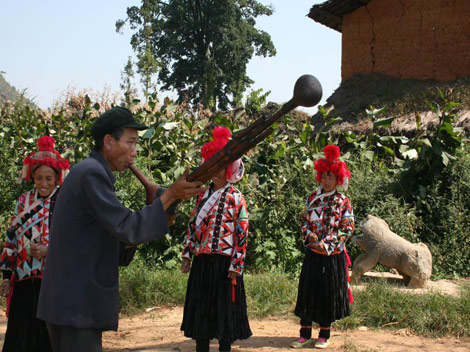






















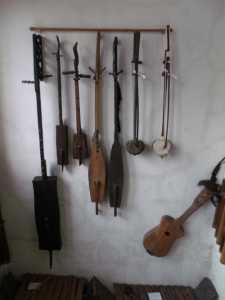




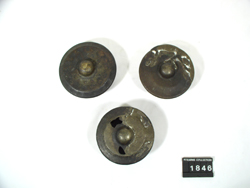




































 ”
”





















